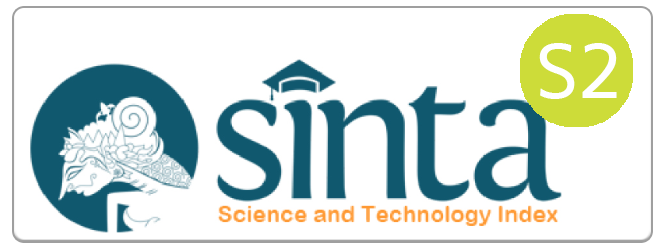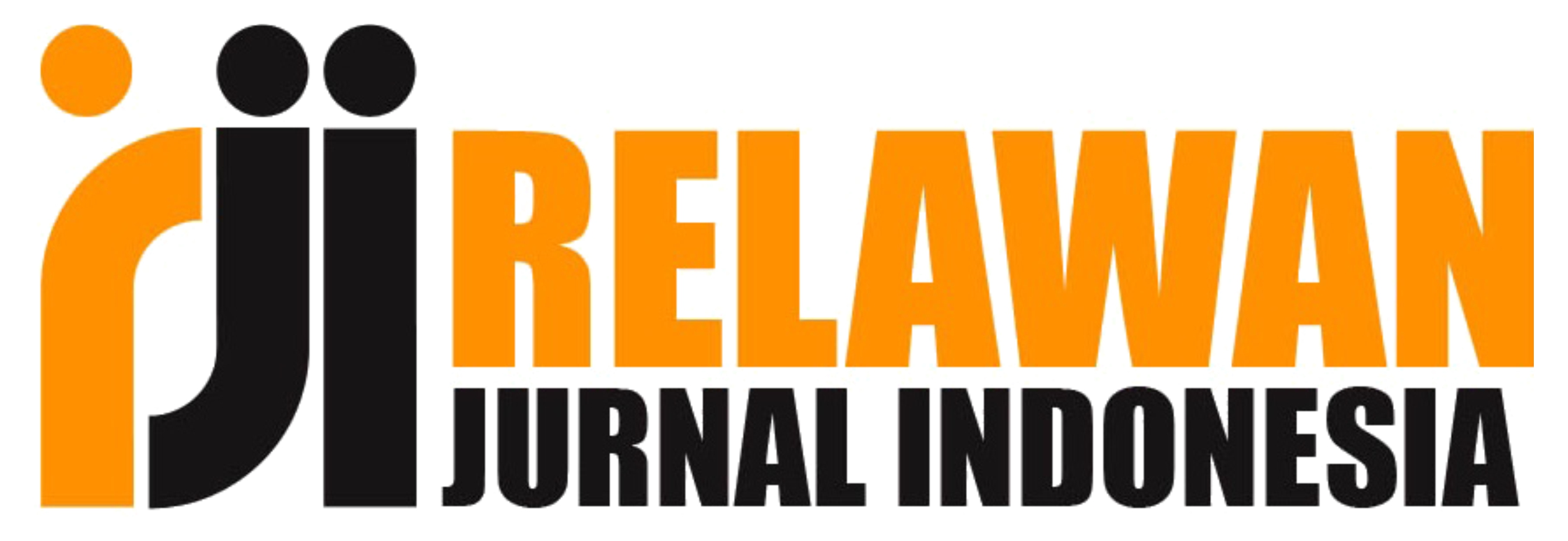The Roles of Islamic Content Quality and Physical Attractiveness of Muslim Influencer on Social Media Consumption: Likeability as Mediator
Abstract
Keywords
Full Text:
PDFReferences
Afthanorhan, A., Awang, Z., & Aimran, N. (2020). Five common mistakes for using partial least squares path modeling (PLS-PM) in management research. Contemporary Management Research, 16(4), 255–278. https://doi.org/10.7903/CMR.20247
Ajiboye, T., Harvey, J., & Resnick, S. (2020). Customer engagement behaviour on social media platforms: A systematic literature review. Journal of Customer Behaviour, 18(3), 239–256. https://doi.org/10.1362/147539219x15774563471801
AlFarraj, O., Alalwan, A. A., Obeidat, Z. M., Baabdullah, A., Aldmour, R., & Al-Haddad, S. (2021). Examining the impact of influencers’ credibility dimensions: attractiveness, trustworthiness and expertise on the purchase intention in the aesthetic dermatology industry. Review of International Business and Strategy, 31(3), 355–374. https://doi.org/10.1108/RIBS-07-2020-0089
Anwar, K., & Mujib, A. (2022). Islamic Faith-Based Content and Religious Social-media Motives. Journal of Ethnic and Cultural Studies, 9(1), 19–38. https://doi.org/10.29333/ejecs/1024
APJII. (2023). Survei APJII Pengguna Internet di Indonesia Tembus 215 Juta Orang. https://apjii.or.id/berita/d/survei-apjii-pengguna-internet-di-indonesia-tembus-215-juta-orang
Balaban, D., & Mustatea, M. (2019). Users’ Perspective on the Credibility of Social Media Influencers in Romania and Germany. Romanian Journal of Communication and Public Relations, 21(1), 31–46.
Cao, D., Meadows, M., Wong, D., & Xia, S. (2021). Understanding consumers’ social media engagement behaviour: An examination of the moderation effect of social media context. Journal of Business Research, 122, 835–846. https://doi.org/10.1016/j.jbusres.2020.06.025
Erdiyana, L. Y., Muslichah, I., Mulia, R., & Setyaning, A. N. A. (2022). Social Media Influencers’ Role on Brand Engagement, Value, and Consumers’ Intention to Buy Muslim Fashion. JBTI : Jurnal Bisnis : Teori Dan Implementasi, 13(1), 62–77. https://doi.org/10.18196/jbti.v13i1.14453
Ferraro, C., Sands, S., Zubcevic-Basic, N., & Campbell, C. (2024). Diversity in the digital age: how consumers respond to diverse virtual influencers. International Journal of Advertising, 0(0), 1–23. https://doi.org/10.1080/02650487.2023.2300927
Fultz, A. A., Stosic, M. D., & Bernieri, F. J. (2024). Nonverbal Expressivity, Physical Attractiveness, and Liking: First Impression to Established Relationship. Journal of Nonverbal Behavior, 48(2), 189–211. https://doi.org/10.1007/s10919-023-00444-7
Hair, J. F., Hult, G. T. M., Ringle, C. M., Sarstedt, M., & Thiele, K. O. (2017). Mirror, mirror on the wall: a comparative evaluation of composite-based structural equation modeling methods. Journal of the Academy of Marketing Science, 45(5), 616–632. https://doi.org/10.1007/s11747-017-0517-x
Hair, J. F., Risher, J. J., Sarstedt, M., & Ringle, C. M. (2019). When to use and how to report the results of PLS-SEM. European Business Review, 31(1), 2–24. https://doi.org/10.1108/EBR-11-2018-0203
Hair Jr, J. F., Hult, G. T. M., Ringle, C. M., Sarstedt, M., Danks, N. P., & Ray, S. (2021). Partial Least Squares Structural Equation Modeling (PLS-SEM) Using R: A Workbook. In Springer Nature (Issue July). Springer Nature Switzerland. https://doi.org/10.1007/978-3-319-57413-4_15
Hannan, A., & Mursyidi, A. F. (2023). Social Media and the Fragmentation of Religious Authority among Muslims in Contemporary Indonesia. Digital Muslim Review, 1(2), 84–104. https://doi.org/10.32678/dmr.v1i2.10
Helal, E. A., Hassan, T. H., Abdelmoaty, M. A., Salem, A. E., Saleh, M. I., Helal, M. Y., Abuelnasr, M. S., Mohamoud, Y. A., Abdou, A. H., Radwan, S. H., & Szabo-Alexi, P. (2023). Exploration or Exploitation of a Neighborhood Destination: The Role of Social Media Content on the Perceived Value and Trust and Revisit Intention among World Cup Football Fans. Journal of Risk and Financial Management, 16(3). https://doi.org/10.3390/jrfm16030210
Henseler, J., Hubona, G., & Ray, P. A. (2016). Using PLS path modeling in new technology research: Updated guidelines. Industrial Management and Data Systems, 116(1), 2–20. https://doi.org/10.1108/IMDS-09-2015-0382
Henseler, J., Ringle, C. M., & Sarstedt, M. (2015). A new criterion for assessing discriminant validity in variance-based structural equation modeling. Journal of the Academy of Marketing Science, 43(1), 115–135. https://doi.org/10.1007/s11747-014-0403-8
Janssen, L., Schouten, A. P., & Croes, E. A. J. (2022). Influencer advertising on Instagram: product-influencer fit and number of followers affect advertising outcomes and influencer evaluations via credibility and identification. International Journal of Advertising, 41(1), 101–127. https://doi.org/10.1080/02650487.2021.1994205
Jin, D., Wan Abas, W. A., & Kamarudin, S. (2023). The Effects of Instagram Users’ Gratification on Psychological Response, and Continued Usage Intention from the Perspective of Uses and Gratification and Stimulus-Organism-Response Theory. International Journal of Academic Research in Business and Social Sciences, 13(3), 90–109. https://doi.org/10.6007/ijarbss/v13-i3/16477
Katadata. (2023). Mayoritas pengguna-internet di indonesia-berasal dari kelompok usia pekerja. Katadata Media Network. https://databoks.katadata.co.id/datapublish/2023/09/06/mayoritas-pengguna-internet-di-indonesia-berasal-dari-kelompok-usia-pekerja
Khan, M. L. (2017). Social media engagement: What motivates user participation and consumption on YouTube? Computers in Human Behavior, 66, 236–247. https://doi.org/10.1016/j.chb.2016.09.024
Kim, E. H. (2022). A Systematic Data Analysis for Attractiveness of Social Media Influencers on Information Reliability and Product Attitude. Journal of System and Management Sciences, 12(1), 85–102. https://doi.org/10.33168/JSMS.2022.0107
Majeed, M., Asare, C., Tijani, A., & Nana, A. (2020). Exploring the impact of social media on customer engagement. International Journal of Advanced Science and Technology, 29(January 2020), 6766–6781. https://www.researchgate.net/publication/348252717_exploring_the_impact_of_social_media_on_customer_engagement
Margom, I., & Amar, M. Ben. (2023). Does the Physical Attractiveness of Instagram Influencers Affect Moroccan Consumer Behavior? A Dyadic Analysis: Influencer vs. Consumer. WSEAS Transactions on Business and Economics, 20, 2188–2204. https://doi.org/10.37394/23207.2023.20.190
Masuda, H., Han, S. H., & Lee, J. (2022). Impacts of influencer attributes on purchase intentions in social media influencer marketing: Mediating roles of characterizations. Technological Forecasting and Social Change, 174(October 2020). https://doi.org/10.1016/j.techfore.2021.121246
Mohd Najib, M. N., Othman, M. I., Sulaiman, S., Ernestina Tenda, P., & Zabidi, M. A. (2023). Trends in Social Media Use among University Students During the Covid-19 Pandemic. International Journal of Academic Research in Progressive Education and Development, 12(2), 774–784. https://doi.org/10.6007/ijarped/v12-i2/16970
Mutia, T. (2022). Da’wahtainment: The Creativity of Muslim Creators in Da’wah Communication on Social Media. Jurnal Dakwah Risalah, 32(2), 147. https://doi.org/10.24014/jdr.v32i2.15536
Myers, S. (2021). Instagram Source Effects: The Impact of Familiarity and Likeability on Influencer Outcomes. Journal of Marketing Development and Competitiveness, 15(3). https://doi.org/10.33423/jmdc.v15i3.4540
Núñez-Gómez, P., Sánchez-Herrera, J., & Pintado-Blanco, T. (2020). Children’s engagement with brands: From social media consumption to brand preference and loyalty. Sustainability (Switzerland), 12(22), 1–16. https://doi.org/10.3390/su12229337
Peltier, J., Dahl, A. J., & VanderShee, B. A. (2020). Antecedent consumer factors, consequential branding outcomes and measures of online consumer engagement: current research and future directions. Journal of Research in Interactive Marketing, 14(2), 239–268. https://doi.org/10.1108/JRIM-01-2020-0010
Rahman, W. N. A., Mutum, D. S., & Ghazali, E. M. (2022). Consumer Engagement With Visual Content on Instagram: Impact of Different Features of Posts by Prominent Brands. International Journal of E-Services and Mobile Applications, 14(1), 1–21. https://doi.org/10.4018/IJESMA.295960
Rahmawati, & Hidayati, N. (2023). Exploring Gen Z Social Media Marketing Engagement on Brand Experience, Brand Equity, and Brand Trust: The Context of Muslim Fashion. Jurnal Manajemen Teori Dan Terapan| Journal of Theory and Applied Management, 16(3), 656–670. https://doi.org/10.20473/jmtt.v16i3.48761
Raji, R. A., Arikewuyo, O. A., Oladimeji Adeyemi, A. S., & Pahore, M. R. (2020). Unveiling Social Gratifications Sought and Obtained from Social Media Utilization. Jurnal The Messenger, 12(2), 168. https://doi.org/10.26623/themessenger.v12i2.1818
Ramadhan, F., Hurriyati, R., & Hendrayati, H. (2021). The Effect of Content Quality and Perceived Enjoyment on Subscribe Intention in YouTube Channel. Proceedings of the 5th Global Conference on Business, Management and Entrepreneurship (GCBME 2020), 187(Gcbme 2020), 302–305. https://doi.org/10.2991/aebmr.k.210831.058
Ryding, D., Boardman, R., Konstantinou, R. (2023). Optimizing the Effect of Influencer Marketing: Exploring Consumers’ Interaction with Different Influencer Types on Instagram (C. L. (eds) Wang (ed.)). The Palgrave Handbook of Interactive Marketing. https://www.researchgate.net/publication/367394350_Optimising_the_Effect_of_Influencer_Marketing_Exploring_Consumers’_Interaction_with_Different_Influencer_Types_on_Instagram
Savitri, A., Sullyanto, & Setyanto, R. P. (2021). The Influence of the Attractiveness of Social Media Influencer on Purchase Intention with Brand Trust as a Mediating Variable (on Beauty Products). International Sustainable Competitiveness Advantage, 26(2014), 833–845.
Schivinski, B., Christodoulides, G., & Dabrowski, D. (2016). Measuring consumers’ engagement with brand-related social-media content: Development and validation of a scale that identifies levels of social-media engagement with brands. Journal of Advertising Research, 56(1), 64–80. https://doi.org/10.2501/JAR-2016-004
Shahid, R., Riaz, H., & Ahmed, H. (2023). From Likes to Buys: Exploring the Impact of Social Media Influencer Marketing on Consumer Purchase Intentions Through Credibility. International Journal of Trends and …, 1(3), 87–99. https://journals.irapa.org/index.php/TIBS/article/view/644%0Ahttps://journals.irapa.org/index.php/TIBS/article/download/644/308
Talha, M., Tahir, Z., & Mehroush, I. (2023). Enhancing customer engagement through source appearance and self-influencer congruence in mobile advertising. Spanish Journal of Marketing - ESIC. https://doi.org/10.1108/SJME-03-2023-0073
Trunfio, M., & Rossi, S. (2021). Conceptualising and measuring social media engagement: A systematic literature review. Italian Journal of Marketing, 2021(3), 267–292. https://doi.org/10.1007/s43039-021-00035-8
Wibowo, A. A. (2022). Publication trends related to Uses and Gratification Theory on social media. International Journal of Communication and Society, 4(2), 258–266. https://doi.org/10.31763/ijcs.v4i2.789
Won, J. (2023). Influence of Formative Principles of Virtual Influencer on the Ads, Brand, and Product Attitude: Mediating Effect of Likeability. Journal of Digital Contents Society, 24(8), 1675–1685. https://doi.org/10.9728/dcs.2023.24.8.1675
Zaid, B., Fedtke, J., Shin, D. D., El Kadoussi, A., & Ibahrine, M. (2022). Digital Islam and Muslim Millennials: How Social Media Influencers Reimagine Religious Authority and Islamic Practices. Religions, 13(4). https://doi.org/10.3390/rel13040335
DOI: http://dx.doi.org/10.56444/mem.v40i1.5244
Article Metrics
Abstract view : 1 timesPDF - 0 times
Refbacks
- There are currently no refbacks.
Copyright (c) 2025 Media Ekonomi dan Manajemen

This work is licensed under a Creative Commons Attribution 4.0 International License.

This work is licensed under a Creative Commons Attribution 4.0 International License.







